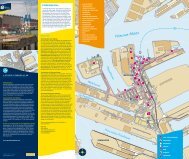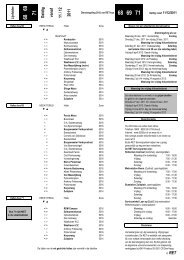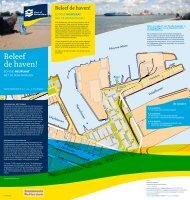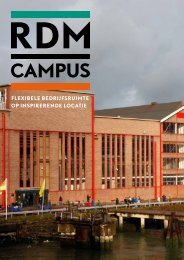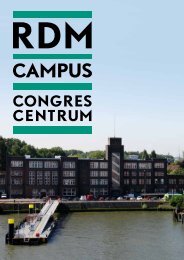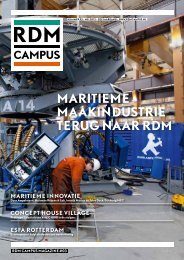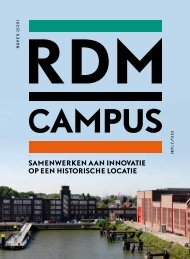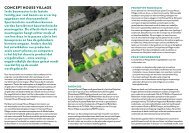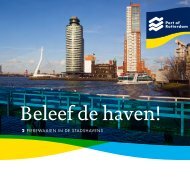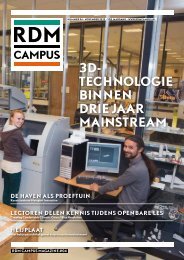Creating Comfortable Climatic Cities - RDM Campus
Creating Comfortable Climatic Cities - RDM Campus
Creating Comfortable Climatic Cities - RDM Campus
You also want an ePaper? Increase the reach of your titles
YUMPU automatically turns print PDFs into web optimized ePapers that Google loves.
48 <strong>Creating</strong> <strong>Comfortable</strong> <strong>Climatic</strong> <strong>Cities</strong>49<strong>Creating</strong> <strong>Comfortable</strong> <strong>Climatic</strong> <strong>Cities</strong>‘Building shells are at the interface between thebuilding interior and ambient climate, and thereforefulfil a number of vital functions that dictate most ofthe buildings energy consumption.’ – Loonen (2010)The main research themes are summarised in the following table:Research fieldsOutputParametric Bioclimatic Design Principles A parameter-driven design instrument that bringsclimatic and spatial parameters into alignment usinga design rule set, with comfort (health) as theprimary evaluation criterion.Parametric Bioclimatic Design can play an invaluable role in meeting these ambitionsfor housing, but also for larger scale buildings such as offices and mixed-usedevelopments. The use of BPS for proof of concept, particularly for larger scalebuildings, will become increasingly important. An integrated design and developmentprocess is the only way this can be achieved.The main research topics pertaining to Parametric Bioclimatic Design relate to energyand resource efficiency, climate adaptation and user comfort, and can be applied toboth existing and future fabric:a) Energy efficiency: investigate the potentials for reducing energy consumption,primarily through the form and building envelope by making use of the localmicroclimate; optima forma – the relationship between building form, energyreduction and comfort; the use of interstitial (climatic) zones and their impacton the form and interior quality of buildings; architectural efficiency versusinstallation efficiency; interior configuration in relation to dynamic comfort andenergy performance;b) Passive design: using a range of biophysical elements such as thermal, humidityand water sinks; adaptive thermal defences; use of flora as heat sinks; phasechange materials, heat storage and radiant defences;c) Integrated power: integration of energy generation in the building envelope (Vollaard,2012); exploring the combination of hybrid passive and active facade solutions;Bioclimatic Design PrinciplesClimate ScenariosParametric Design Principles and softwaretoolsTypology, function, scale and PBDMaterial use and energy performanceEnergy performance and comfortDesign instruments that employ climatic conditionsto reduce consumption and generate user comfortat either the building or urban scale.Defining the consequences of differentclimate scenarios on the functioning of certainbioclimatic systems.Rule-driven instruments that generate morphologybased on explicit constraints relating to form andperformance.Typologies of bioclimatic design that are optimisedfor certain parameter sets.Inventory of materials sorted by effect onenergy performance and comfort, resultingin material performance constraints forParametric Bioclimatic Design.Monitoring and prediction tools to analysedynamic comfort based on comfort zone as opposedto the energy performance coefficient.d) Resource efficiency: the potentials for the reuse of waste and demolitionmaterials in the building industry on a regional scale; the potentials of biobasedmaterials; design for disassembly and reuse;e) Climate adaptation: adapting the existing stock to the effects of climate change,such as increased cooling demand and water retention;f) Parametric design and Building Performance Simulation (BPS): testing multipledesign options by combining explicit physical constraints with performanceand comfort constraints (energy performance, daylight penetration, thermaltemperature, humidity and air circulation);Experts agree that in terms of sustainable change, more can be gained at a clusterand district scale than at the scale of the individual building. Due to the economy ofscale, the potentials for energy exchange increase at the cluster and district scales.Besides the increased technical efficiency, clusters also present other challenges andopportunities for applying Parametric Bioclimatic Design principles.g) Development of design tools for Parametric Bioclimatic Design.



